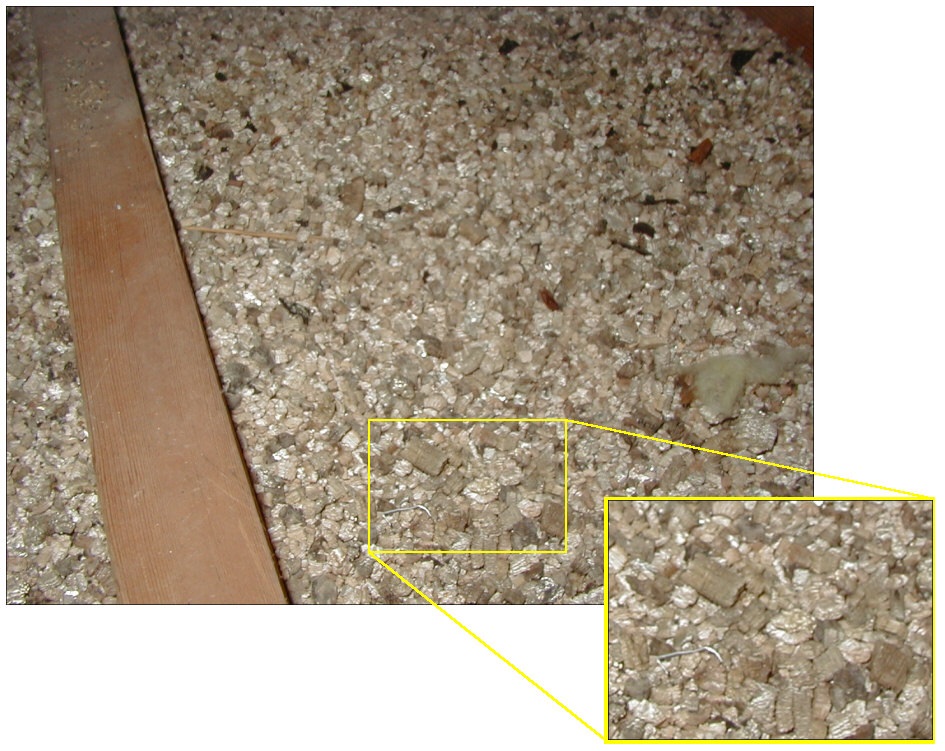Vermiculite Insulation
Vermiculite is a type of insulation material that was installed in Canadian homes from as far back as the 1920s until around 1990. It is odourless, extremely fire-resistant, lightweight, easy to install and has excellent insulation properties. In fact, it was included as one of the recommended materials in the very successful CHIP (Canadian Home Insulation Program) between 1977 to around 1984 – an energy-saving initiative by the government that provided financial assistance for homeowners to upgrade the level of insulation in their home.
Unfortunately, health concerns arose that all but put an end to vermiculite’s use as insulation in homes. But before these concerns were raised, it is estimated that around a quarter of a million Canadian homes had it installed.
If you know your home insulation has, or suspect it contains vermiculite, there are some very specific precautions you need to take and things you should know to keep your home’s occupants safe. And if you plan to sell, be prepared to discuss the subject of vermiculite and what it means to those who reside in the home.
Vermiculite itself is not the problem
When it was first introduced, vermiculite was regarded as somewhat of a miracle product that was used for a variety of things, most notably as insulation and as a soil additive. Vermiculite is a mineral similar to mica that when heated to a high temperature will ‘pop’ like kernels of corn. The resulting product has lots of air space to trap warm air – making it a good insulator. When used as a soil enhancer, those same air spaces hold water and nutrients to improve growing conditions.
The problem was that most of the vermiculite made available to the North American insulation market came from the Libby Mine in Montana, USA that also contained asbestos. It is the asbestos in the vermiculite that is the concern. The most noted insulation brand of concern was Zonolite® sold between 1940 and 1984. Zonolite® contained a particularly carcinogenic type of asbestos called tremolite.
While not all Canadian homes were insulated with vermiculite that came from that one mine, some estimates suggest that over 80% were. For this reason, if your home has vermiculite, it is reasonable to assume it does contain asbestos.
What are the health concerns?
When inhaled into the lungs, the asbestos present in vermiculite becomes a problem. It has been associated with diseases including asbestosis, mesothelioma and lung cancer. Many workers at the mine in Montana died or were afflicted with these diseases.
How to identify vermiculite
Inspectors are trained to identify vermiculite and examination of insulation and the attic space in general is part of an overall home inspection. But if you are concerned that your home contains vermiculite insulation, there are companies that specialize in its identification and safe removal. It is best to contact them to deal with your concern, because if disturbed, vermiculite dust and asbestos fibres will easily become airborne and be a danger to anyone in the area.
You can collect samples yourself and send it to a company that can verify your concerns, but health experts urge extreme caution when doing so. If collecting samples yourself, first don an approved breathing filter, then carefully scoop a cup or so from your attic and immediately place it in a sealed plastic bag. Labs typically require 3 samples from different areas and depths for a proper asbestos test.
Vermiculite is fairly easy to spot. Generally 1-2 cm in size (1/2 in) and grayish beige in colour, it has a slightly reflective surface.
Is removal necessary?
If you identify that your home does indeed have vermiculite insulation, it is not necessary to have it removed. As long as it is left undisturbed, no health risks should surface. However, some homeowners feel that removal is the safest route and the best way to allay any fears – or negative impact on price – when selling their home.
How to live with vermiculite
If you choose to leave vermiculite in place and not have it removed, there are a couple of precautions that should be taken to avoid exposure. First, consider your attic out of bounds! No one should ever enter the space or use it for storage, etc. Second, seal all cracks – even seemingly minor ones – in the ceiling and walls of the top floor of your home. The ceiling is of obvious concern, but because the vermiculite granules ‘flow’ like water, over time they will also settle in some wall cavities by sifting through holes made for wiring and plumbing.
What if we want to renovate?
Depending on the extent of any renovation plans, vermiculite may have to be removed completely. If your reno plans involve opening up the ceiling and walls of the top floor, trying to contain it may be futile, and many contractors and workers will refuse to work if it is present. Best to plan for its safe removal prior to any other aspect of the renovation.
Courtesy: Lighthouse Inspections

